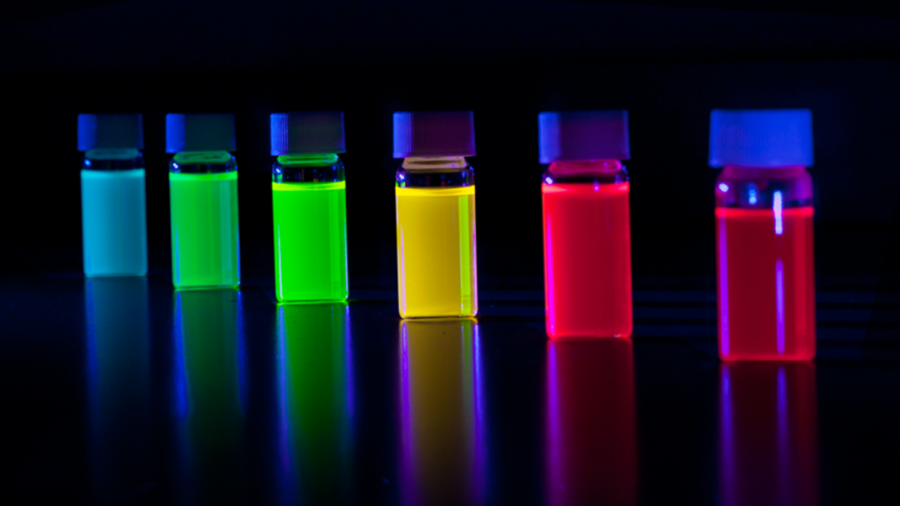QDs for Displays: Understanding Hybrid QD-OLEDs
With unmatched peak brightness capabilities and outstanding color production, quantum dots (QDs) represent one of the most promising innovations in displays to date. However, the gradual rollout of quantum dot-based consumer devices has been inhibited by research and development (R&D) bottlenecks as well as corporate decision-making processes. This extended timescale has enabled QDs for display technologies to undergo various changes in a comparatively short period.
QDs for Displays: A Short History
The first quantum dot displays were polymeric dispersions loaded in glass tubes over light-emitting diodes (LEDs) at the edges of display panels. High energy consumption and poor longevity accelerated the need for a successor technology, yielding the current standard inkjet printed QD films for liquid-crystal displays (LCDs). Though these premium panel types can offer peak brightness levels exceeding 2000 nits and a wider color gamut (WCG) than any other technology on the market, quantum dots are only beginning to achieve widespread use in consumer displays.

QDs are unique nanomaterials based on tiny semiconducting particles that absorb light and re-emit it at a specific wavelength. Quantum dot materials often demonstrate a strongly linear relationship between chemistry, size, and emitted wavelength, which enables manufacturers to produce QDs with finely-tuned optoelectronic properties by tightly controlling key production parameters. Yet, when generating QDs for displays, formulators have myriad additional performance indicators to bear in mind.
Few manufacturers offer thermally-stable QDs based on RoHS conform chemistries. Many that do are reliant on speculative exemptions pertaining to the use of cadmium (Cd) in consumer electronics, which may not instill confidence in downstream manufacturers. Samuel Halim at Avantama summarised this dynamic succinctly:
“The display industry is dominated by only a handful of very big players which always need to balance opportunity and risk. A large electronics company will only want to be the “first mover” of a new technology if opportunities exceed the risks. Getting to this balance is not easy.”
Connected to this complex dynamic is the competitive nature of the display sector, which is already occupied by tried-and-trusted LCDs as well as high-performance organic light-emitting diode (OLED) technology. At Avantama, we have written extensively on the competition between QD-enhanced displays and OLED alternatives, with market outlooks often positioning the two technologies as opposing camps in a budding premium display format war. However, Samsung Electronics has made the bold move of integrating QDs for displays into an OLED stack in an attempt to create displays that engage the strengths of both.
What is a QD-OLED TV & How Would They Work?
Currently, OLED TVs utilize a white light-emitting panel based on organic materials and a series of integrated red, green, and blue (RGB) color filters to block specific wavelengths and produce colors onscreen. The primary benefit of OLEDs over LCDs is their ability to completely extinguish the light output of individual pixels, thereby producing optimal black levels. By stripping out conventional color filters in favor of a conversion layer based on red-green QDs and using an blue OLED panel as a light source rather than a white one, next-generation QD-OLED panels could provide a completely novel method of rendering color in displays.
Read More: What is a QD-OLED TV?
Though Samsung Electronics executives have predicted product launches based on this innovative technology to begin within the next few years, it is unclear how global supply chain issues could impact this timeframe. It is also worth remembering that this technology is still in the R&D phase, and represents just one potential innovation in an increasingly dynamic market.
QDs for Displays from Avantama
Avantama is one of the world leaders in nanomaterial formulations, including QDs for displays and OLED applications. If you would like more information about how we have overcome many of the traditional obstacles within the QD market for mass production of industry-leading solutions based on proprietary chemistries, simply contact a member of the Avantama team today.